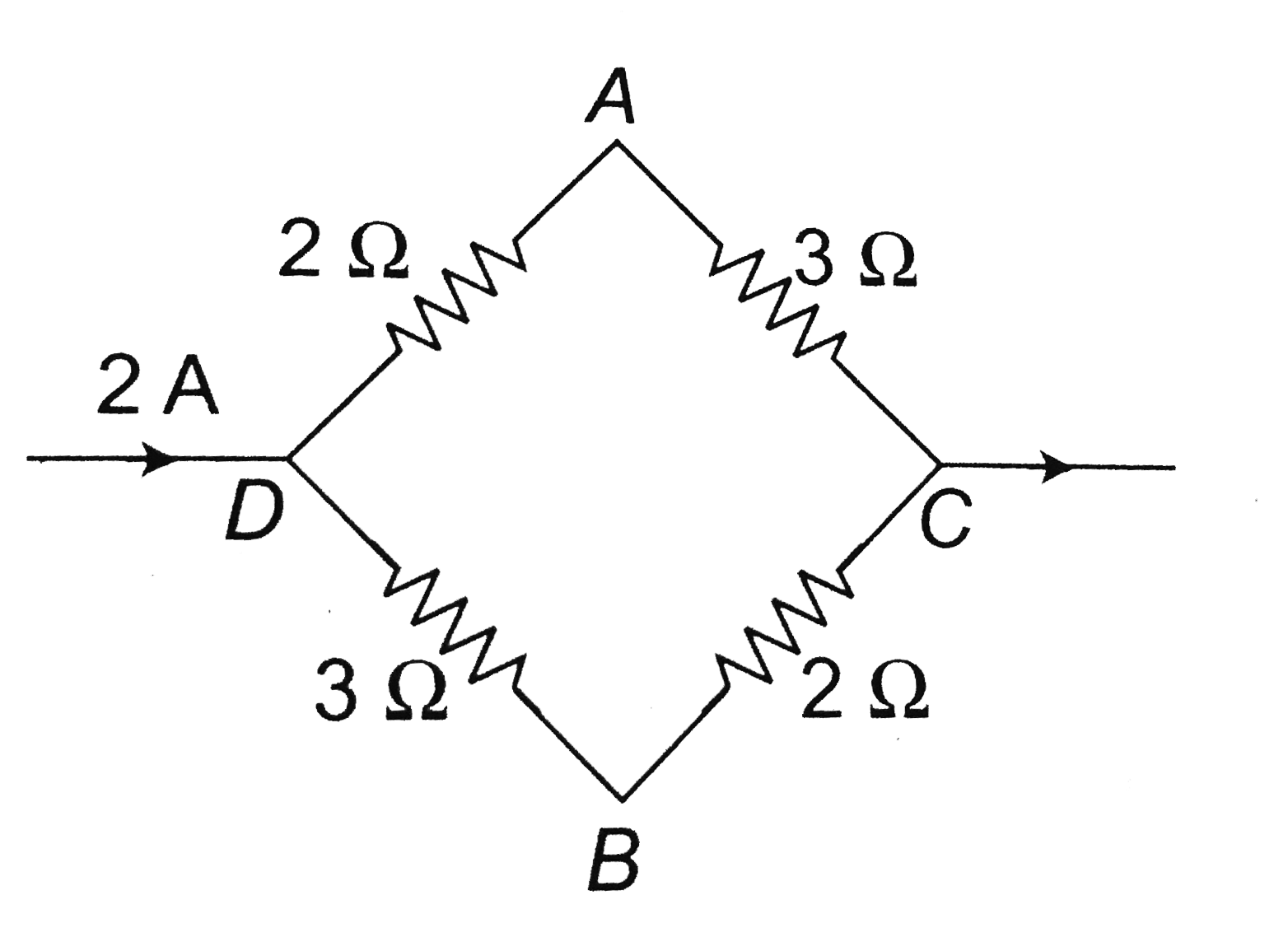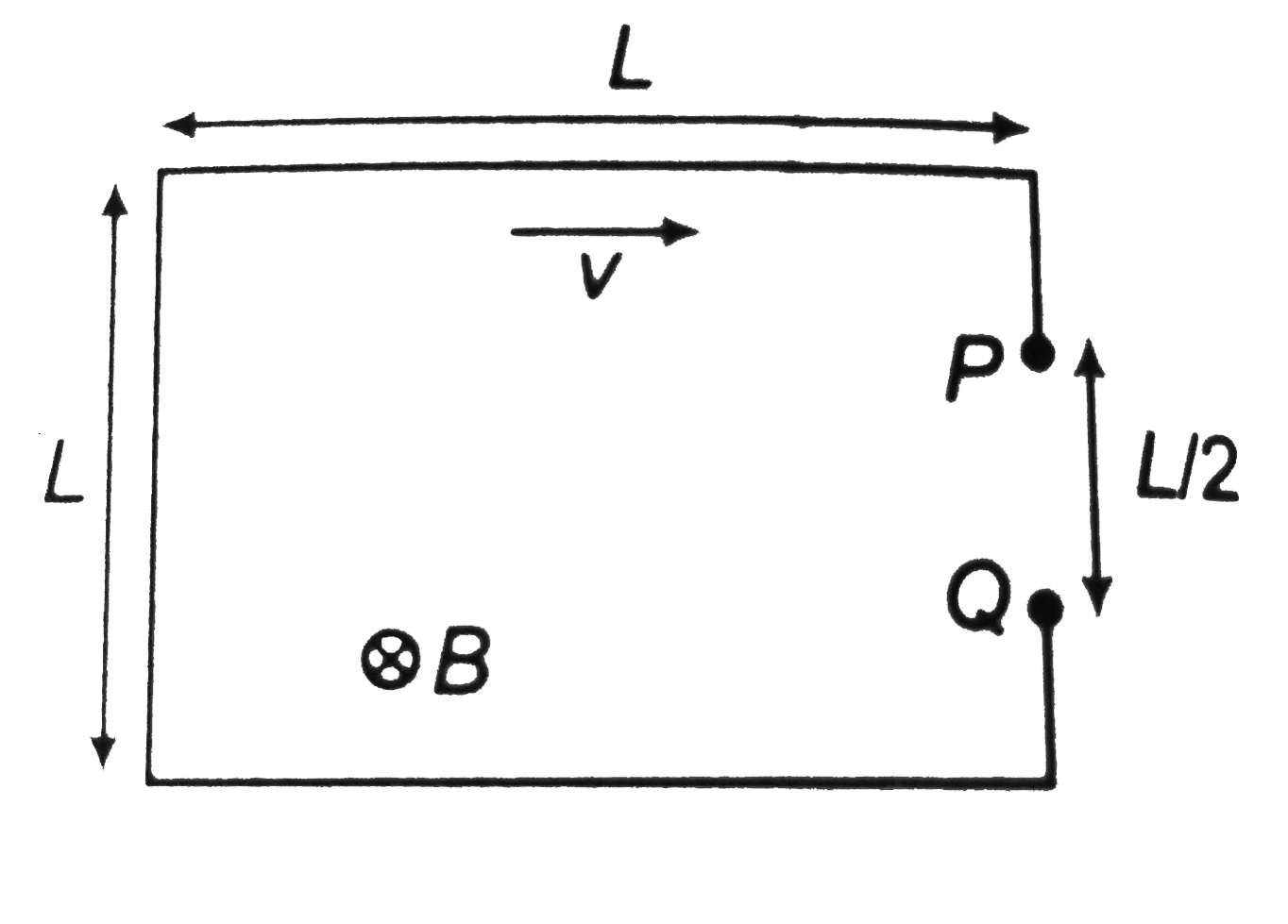A current flows through a rectangular conductor in the presence of uniform magnetic field B pointing out of the page as shown. Then the potential difference VP−VQ is equal to (assume charge carriers in the conductor to be positively charged moving with a drift velocity of v )

Bvb
−Bvb
Bvc
−Bvc
The correct Answer is:A
Step by step video, text & image solution for A current flows through a rectangular conductor in the presence of uniform magnetic field B pointing out of the page as shown. Then the potential difference V_(P)-V_(Q) is equal to (assume charge carriers in the conductor to be positively charged moving with a drift velocity of v ) by Physics experts to help you in doubts & scoring excellent marks in Class 12 exams.
Topper's Solved these Questions
- BOOK - PHYSICS GALAXY - ASHISH ARORACHAPTER - ELECTROMAGNETIC INDUCTION AND ALTERNATING CURRENTEXERCISE - Numerical MCQs60videos
ELECTROMAGNETIC INDUCTION AND ALTERNATING CURRENT
- BOOK - PHYSICS GALAXY - ASHISH ARORACHAPTER - ELECTROMAGNETIC INDUCTION AND ALTERNATING CURRENTEXERCISE - Advance MCQs33videos
ELECTROMAGNETIC INDUCTION AND ALTERNATING CURRENT
- BOOK - PHYSICS GALAXY - ASHISH ARORACHAPTER - ELECTROMAGNETIC INDUCTION AND ALTERNATING CURRENTEXERCISE - Discussion Question-21videos
ELECTROMAGNETIC INDUCTION AND ALTERNATING CURRENT
- BOOK - PHYSICS GALAXY - ASHISH ARORACHAPTER - CURRENT ELECTRICITYEXERCISE - All Questions389videos
CURRENT ELECTRICITY
- BOOK - PHYSICS GALAXY - ASHISH ARORACHAPTER - ELECTROSTATICSEXERCISE - Unsolved Numberical Problems73videos
ELECTROSTATICS
Similar Questions
Knowledge Check
- Question 1 - Select One
A current of 2A flows in a system of conductor as shown. The potential difference (VA−VB)
 A+2VB+1VC−1VD−2V
A+2VB+1VC−1VD−2V - Question 2 - Select One
A neutral metal bare moves at a constant velocity v to the right through a region of uniform magnetic field directed out the page, as shown. Therefore,
 Apositive charges accumulate to the left side and negative charges to the right side of the rodBnegative charges accumulate to the left side and positive charges to the right side of the rodCpositive charges accumulate to the top end and negative charges to the bottom end of the rodDnegative charges accumulate to the top end and positive charges to the bottom end of the rod
Apositive charges accumulate to the left side and negative charges to the right side of the rodBnegative charges accumulate to the left side and positive charges to the right side of the rodCpositive charges accumulate to the top end and negative charges to the bottom end of the rodDnegative charges accumulate to the top end and positive charges to the bottom end of the rod - Question 3 - Select One
In the figure shown a T-shaped conductor moves with constant angular velocity ω in a plane perpendicular to uniform magnetic field B. The potential difference VA−VB is
 AzeroB12Bωl2C2Bωl2DBωl2
AzeroB12Bωl2C2Bωl2DBωl2
What would be the resistance of a conductor if the current flow through it is 0.35 A when the potential difference across is 1.4 V?
View SolutionA proton is accelerated through a potential difference V, subujected to a uniform magnetic field acting normal to the velocity of the proton. If the potential difference is doubled, how will the radius of the circular path described by the proton in the magnetic field charge ?
View SolutionIn the Hall effect, we have a current flowing in the presence of a uniform magnetic field, and we get a potential difference across the conductor. Which is incorrect statement?
View SolutionThe loop shown moves with a velocity v in a uniform magnetic field of magnitude B, directed into the paper. The potential differene between point P and Q is e. Then
 View Solution
View SolutionThe work done in carrying a charge of 5μC form a point A to a point B in an electric field is 10mJ. The potential difference (VB−VA) is then
View Solution


